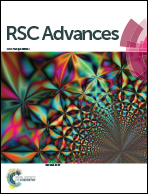Prediction of the efficiency of diastereoisomer separation on the basis of the behaviour of enantiomeric mixtures
Abstract
The driving force of homo- and heterochiral complex formation in mixtures of chiral compounds is, probably, the effort of the system to separate the most symmetric associates from the less symmetric ones. A possible way to achieve separation of these associates is distribution between two phases. Therefore, during the separation of (a certain part) diastereoisomers similar trends can be observed as in the course of the distribution of enantiomeric mixtures between two phases, although in the first case a third chiral compound (namely the resolving agent) is present. Of course in this case the pursuit of symmetry is not so obvious as in case of enantiomeric mixtures. It should be noted that the outcome may thus be modified by the intervention of kinetic control. One can conclude that the structure of chiral compounds encodes the result of the (optical) resolution.


 Please wait while we load your content...
Please wait while we load your content...